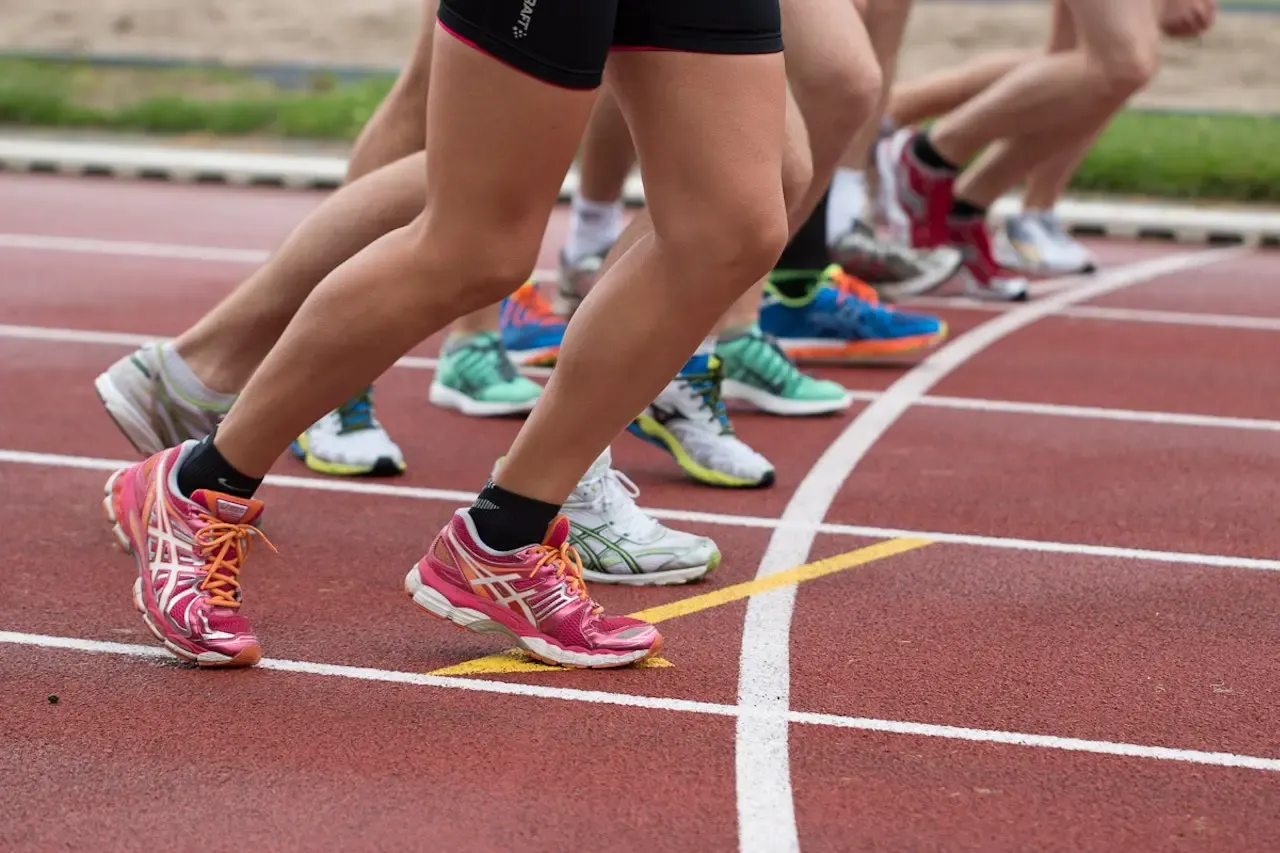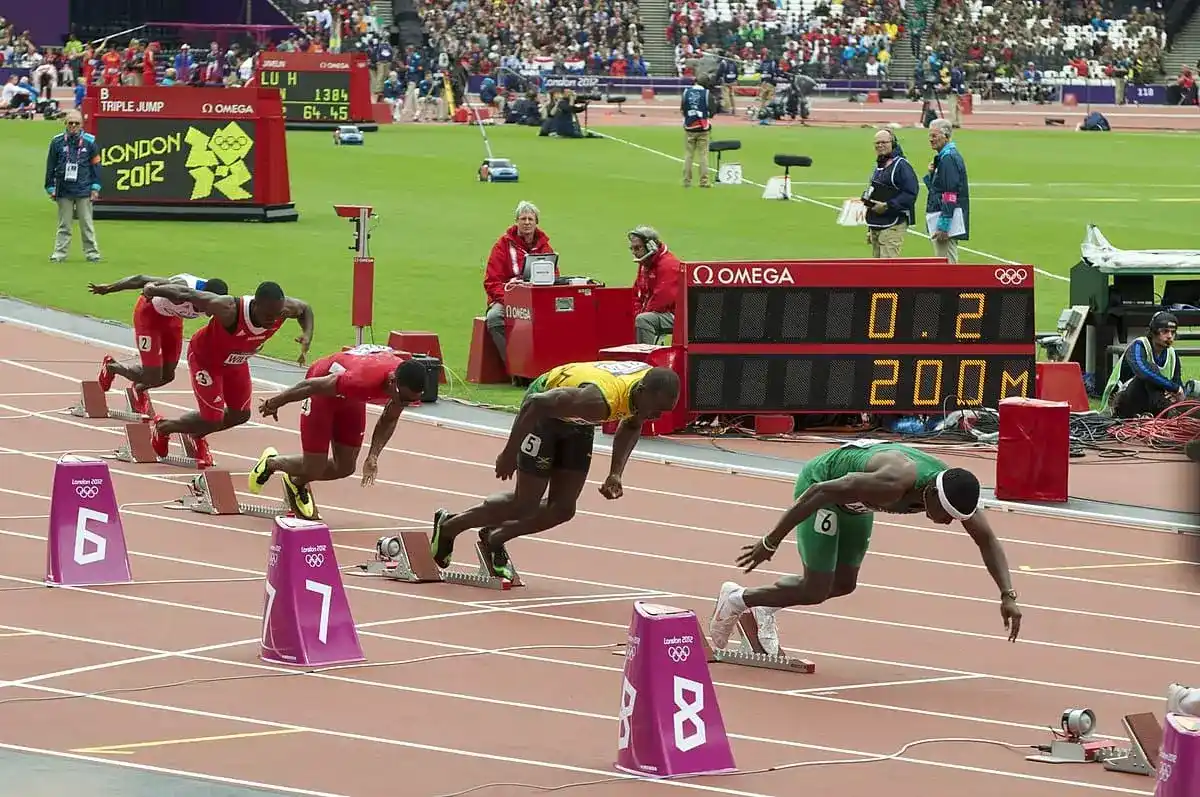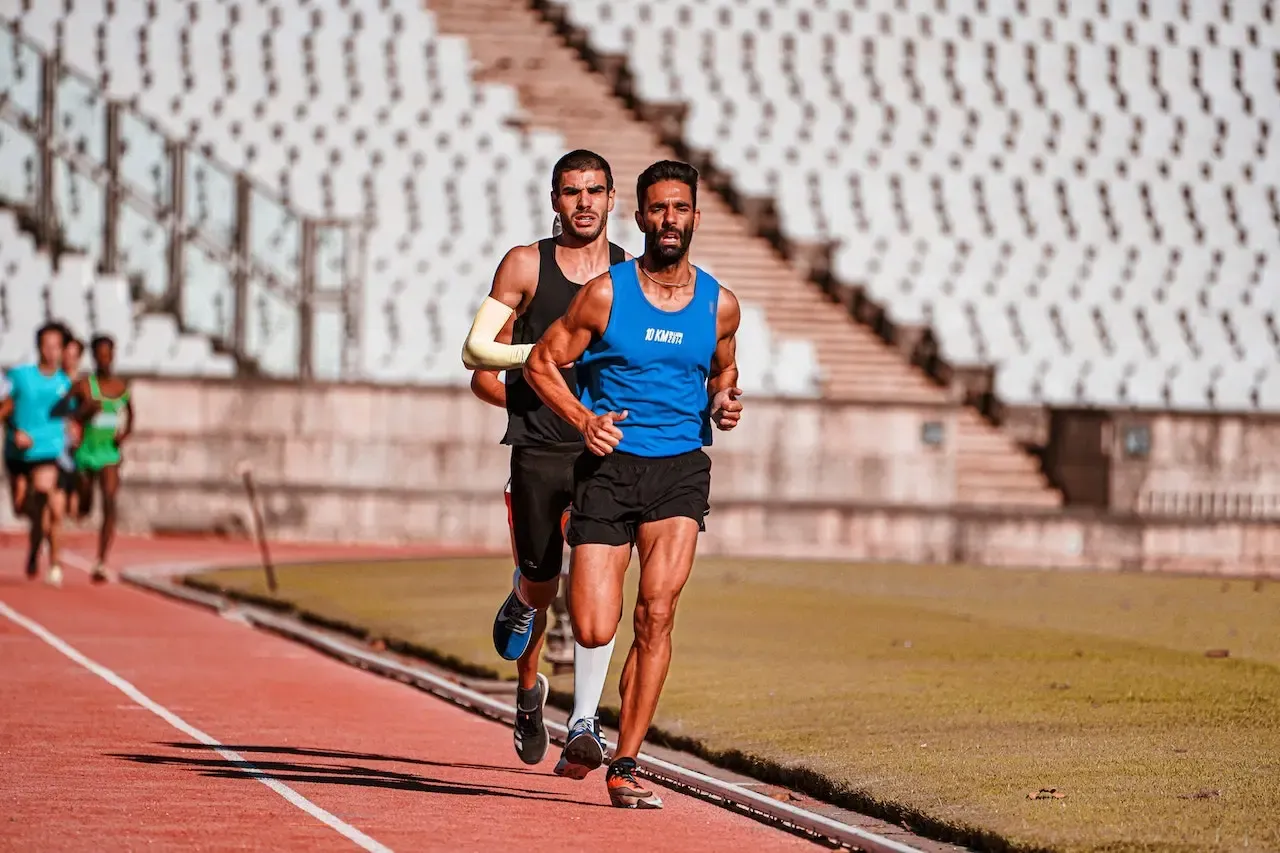Average 200-Meter Time: 5 Tips to Prepare for This Sprint
Running is one of the most popular and accessible sports, practiced by people of all ages and abilities around the world. The average 200-meter time is one of the most discussed running records, and this sprint is among the most exciting and challenging running events.
In this blog post, we will explore this short-distance running event, including 200-meter dash times by age, gender, and experience level, factors affecting it, and tips to improve your pace. Let’s get moving!
How can someone improve their time in the 200-meter dash?
The 200-meter dash average time is 23-25 seconds for men and 26-28 seconds for women. However, this can vary depending on the individual’s fitness level, training, and experience. You can improve your time with a good plan, regular practice, and dedication.

What Is the Distance of 200 Meters for Running?
It is a relatively short distance but requires a lot of speed, power, and endurance to complete in a fast time.

Pro Tip:
The 200-meter sprint is a track-and-field event run on a standard 400-meter track. This distance is equivalent to 656 feet or 218 yards.

Pro Tip:
The 200-meter sprint is a track-and-field event run on a standard 400-meter track. This distance is equivalent to 656 feet or 218 yards.
This distance is primarily practiced by sprinters, who are athletes specializing in short-distance events. Sprinters are known for their explosive speed and power, which they use to cover a distance of 200 meters quickly. They also require endurance to maintain their pace throughout the race. Sprinting is a highly competitive sport, with athletes from around the world competing in events such as the Olympics, world championships, and national championships.
The 200-meter sprint is a standard event in track-and-field competitions, which are held at all levels of competition, from high school to professional. In addition to this sprint, other common short-distance events include the 100-meter sprint and 400-meter relay. Track-and-field is a sport practiced in most countries worldwide, and is one of the oldest and most respected sports in the Olympic Games.
Running Time Calculator for Covering a Distance of 200 Meters
This calculator helps estimate the time it takes to cover a 200-meter distance, considering factors such as gender, training level, and age. Use this tool to get an approximate duration for covering the specified distance.
Running Time Calculator
Result:
The Average Time for Running 200 Meters
The 200-meter race is a common distance for sprinters. That being said, the average time for running this distance can vary greatly, depending on several factors. Let’s explore the average time for running 200 meters by age, gender, and level of training.
Average 200-Meter Dash Time by Age Group
Here is a breakdown of the average time for running 200 meters by age group:
| Age Group | Age Time (in second) |
|---|---|
| 15-25 | 23.0 |
| 25-35 | 24.0 |
| 35-45 | 25.0 |
| 45-55 | 26.0 |
| 55+ | 28.0 |
As you can see, the average time for 200-meter dash increases with age. This is because the body’s muscles and cardiovascular system tend to weaken with age, making it harder to run faster.
Average Time for Running 200 Meters by Gender
Gender can also affect the average time for running 200 meters. Here is a breakdown of the average time for running this distance by gender:
| Gender | Average Time (in seconds) |
|---|---|
| Male | 23.0 |
| Female | 26.0 |
As you can see, males run faster than females. This is because males generally have more muscle mass and higher testosterone levels, which can lead to increased speed and power.
Average Time for Running 200 Meters by Level of Training
Finally, level of training can also affect the average time for running 200 meters. Here is an analysis of the average time for running based on level of training:
| Level of Training | Average Time (in seconds) |
|---|---|
| Beginner | 28.0 |
| Intermediate | 24.0 |
| Advanced | 21.0 |
As you can see, the more advanced the level of training, the faster the average time for running. This is because advanced athletes have better technique and conditioning, allowing them to run at a faster pace.
Subscribe to Our Running Newsletter!
Get free running tips from renowned professional athletes and discounts from top-notch brands.
What Is a Good 200m Time?
A good time for running 200 meters depends on various factors.
This time is considered good for athletes who are not specialized in sprinting, but who have decent running abilities. However, professional athletes can run this distance much faster.
Male Record
Usain Bolt from Jamaica holds the world record for the men’s 200 meters. In 2009, he ran the distance in an astonishing 19.19 seconds at the World Championships in Berlin, which is the fastest ever recorded time for this distance. Other notable male athletes who have run the 200 meters in under 20 seconds include Yohan Blake, Tyson Gay, and Michael Johnson.

Female Record
Florence Griffith-Joyner from the United States holds the world record for the women’s 200 meters. In 1988, she ran the distance in an incredible 21.34 seconds at the Seoul Olympics. This time still stands as the fastest ever recorded for female athletes. Other notable female athletes who have run in under 22 seconds are Marion Jones, Allyson Felix, and Elaine Thompson.
3 Factors Affecting the Time of a 200-Meter Run
Here are three of the most important factors impacting an athlete’s performance in this event.
1. Stride Length
One of the most critical factors that affect a good 200-meter time is stride length. This refers to the distance an athlete covers with each running stride. The longer the stride length, the fewer steps an athlete needs to take to cover the distance, resulting in a faster time. Athletes can increase their stride length by improving their flexibility, strength, and technique.
Our Recommendation
New Balance Men’s Fresh Foam X More V4 Running Shoe
These shoes provide comfort while running. Ideal for runners seeking a cushioned and supportive run.
Material:
Lightweight and breathable.
Sole Material:
Fresh Foam X midsole, 3% bio-based
Outsole (tread feature):
Drop:
Moderate heel-to-toe drop for a balanced stride.
Type:
Neutral running shoe.
Best For:
Comfort-seeking runners.
2. Sprinting Technique
Another crucial factor is sprinting technique. Sprinting technique involves the correct use of the arms, legs, and body position to maximize speed and efficiency. Proper technique can help athletes maintain their speed throughout the race and reduce the risk of injury.
3. Endurance
Endurance is another important factor that can affect the time of a 200-meter run. Endurance refers to an athlete's ability to maintain their speed over a prolonged period of time. A 200-meter race requires both explosive power and endurance. Athletes can improve their endurance by incorporating both aerobic and anaerobic exercise into their training regimen.
5 Tips How to Prepare for a 200-Meter Race
Whether you are a seasoned athlete or a beginner, preparing for a 200-meter race can be challenging. Wondering how to show the best result? Below, we provide five simple but effective tips to help you prepare for this run and improve your performance.
1. Proper Warm-Up
Before any race, it is essential to warm up your muscles properly. This will help prevent injuries and ensure your body is ready for the race. A good warm-up should include light jogging, stretching, and dynamic exercises to increase your heart rate and blood flow. Spend 10-15 minutes warming up before your 200-meter race.
2. Strength Training
Strength training is crucial for improving your speed and endurance. Incorporate squats, lunges, and leg presses into your workout routine to build your leg muscles. Strong legs will help you generate more power and speed during the race.
Our Recommendation
These stretch bands are designed for women and men. Crafted from durable latex and have 5 resistance levels, these portable and cater to various exercises.
Pros:
- Durable Latex provides stability and skin-friendly experience.
- Targets multiple body parts with ease.
- Guidance for targeted exercises.
- Convenient storage and on-the-go use.
Cons:
- May not be suitable for individuals with latex allergies.
3. Practice Your Technique
Good technique is essential for a successful 200-meter run. Focus on your arm and leg movements, and practice your stride length. A good stride length will help you cover more ground with each step, improving your speed. You can also practice running on the balls of your feet to maintain good form.
4. Mental Preparation
Mental preparation is crucial for any race. Visualize yourself running the 200-meter race and focus on breathing and form. Stay positive and confident, and believe in yourself. This will help you stay motivated and focused during the race.
5. Practice, Practice, Practice
Finally, the key to success in any race is practice. Practice your 200-meter run regularly, gradually increasing your speed and endurance. Set realistic goals for yourself and track your progress. With consistent practice, you will improve your performance and achieve your goals.

Frequently Asked Questions About Average 200-Meter Time
What Is the Average 200-Meter Time for a 13-Year-Old?
If you're wondering what the average 200-meter time is for a 13-year-old, it can vary depending on gender, experience, and training. However, according to some studies, the average time for boys is around 30 seconds, while for girls it's around 34 seconds.
How Can I Be Good at Running 200 Meters?
You should focus on both speed and endurance is important. Add sprint drills and interval training to your workouts to build speed and improve your time. Don't forget to work on your endurance by adding longer distance runs to your routine.
How Can I Run 200 Meters Without Getting Tired?
You must work on your endurance and speed. Start by gradually increasing your distance and incorporating interval training. Focus on your breathing and proper form to conserve energy. Don't forget to rest and recover properly.
Final Thoughts on Average 200-Meter Time
The 200-meter sprint is a short but challenging event requiring speed, power, and endurance. It is practiced primarily by sprinters and is a standard event in track-and-field competitions. Whether you are a competitive athlete or a recreational runner, the 200-meter sprint is an exciting and thrilling event that can push you to your limits.
What is your 200-meter time? Please share your results in the comments below.
Also read:
- Is Running 3 Miles a Day Good
- Running 10 Miles A Day
- How To Tape A Knee For Running
- Can You Run Barefoot on Treadmill
- Average Time to Run 3 Miles
- Running Barefoot On Treadmill
- Best Running Hats
- Pool Running
References:
- Energy system contribution to 100-m and 200-m track running events // PubMed: https://pubmed.ncbi.nlm.nih.gov/15518295/
- Sprint running: from fundamental mechanics to practice-a review // PubMed: https://pubmed.ncbi.nlm.nih.gov/30963240/
- Changes in running mechanics over 100-m, 200-m and 400-m treadmill sprints // PubMed: https://pubmed.ncbi.nlm.nih.gov/27015963/
- Accounting for elite indoor 200 m sprint results // PMC: https://www.ncbi.nlm.nih.gov/pmc/articles/PMC1617210/
- Relationships between Sprint, Jumping and Strength Abilities, and 800 M Performance in Male Athletes of National and International Levels // PMC: https://www.ncbi.nlm.nih.gov/pmc/articles/PMC5548166/
If you have any questions or suggestions, you can contact us via email – [email protected]








